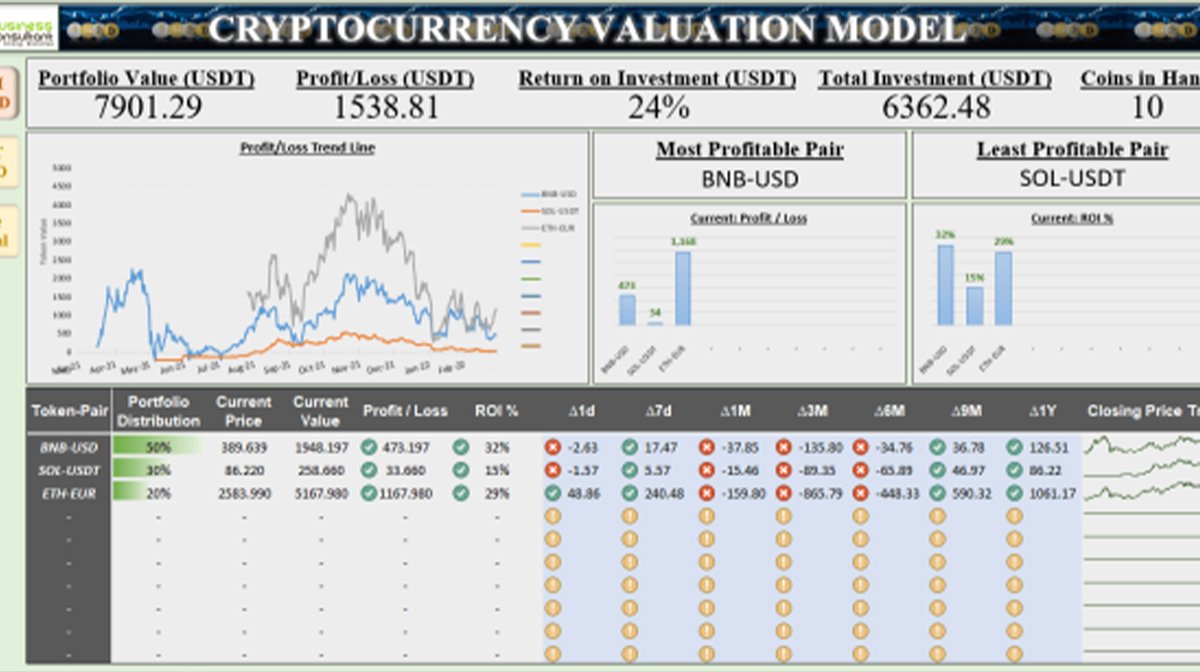Introduction to Crypto Emissions Schedule Template Excel
Cryptocurrencies have become a critical part of the modern financial landscape, bringing with them a unique set of challenges and opportunities. Among these is the need to manage emissions schedules effectively. A well-organized crypto emissions schedule ensures that you can track the release of tokens, manage supply, and maintain market stability. An Excel template can be an invaluable tool in this process, offering flexibility and precision.
In this article, we will explore how to create a comprehensive crypto emissions schedule template in Excel. We will cover everything from the basics of emissions schedules to the detailed steps of setting up your Excel template, complete with formulas, charts, and best practices.
What is a Crypto Emissions Schedule?
A crypto emissions schedule outlines the planned release of cryptocurrency tokens over time. This schedule is crucial for both developers and investors, as it affects the supply dynamics and, ultimately, the market value of the cryptocurrency. Understanding the emission rate and schedule helps in making informed decisions, whether you are involved in mining, staking, or investing.
Key Components of a Crypto Emissions Schedule
Before diving into Excel, it’s essential to understand the key components of an emissions schedule:
- Initial Coin Offering (ICO) Details: This includes the total number of tokens issued during the ICO and the allocation percentages.
- Vesting Periods: These are the timelines over which tokens are released to founders, developers, and early investors.
- Inflation Rate: The rate at which new tokens are introduced into circulation over time.
- Emission Cap: The maximum number of tokens that can be mined or created.
- Halving Events: Specific points at which the reward for mining new blocks is halved, reducing the rate of new token creation.
Why Use Excel for Managing Crypto Emissions Schedules?
Excel offers a robust platform for managing complex data, making it ideal for handling crypto emissions schedules. With Excel, you can:
- Customize Templates: Tailor your emissions schedule to fit the specific needs of your cryptocurrency project.
- Use Formulas: Automate calculations for token release, inflation rates, and other key metrics.
- Create Charts: Visualize the emissions schedule through graphs, making it easier to understand and present to stakeholders.
- Track Changes: Monitor and adjust your emissions schedule as your project evolves.
Step-by-Step Guide to Creating a Crypto Emissions Schedule Template in Excel
Creating a crypto emissions schedule template in Excel involves several steps. Below is a detailed guide to help you get started:
1. Setting Up the Initial Framework
Begin by setting up the basic structure of your Excel sheet:
- Create Columns for Key Data: Start with columns for dates, total tokens, tokens released, cumulative tokens, and remaining tokens.
- Define Time Intervals: Decide on the time intervals for your schedule (e.g., daily, weekly, monthly).
- Enter Initial Values: Input the total number of tokens and any initial release data from the ICO.
2. Incorporating Formulas for Automatic Calculations
Excel’s strength lies in its ability to automate calculations. Here’s how to use formulas in your template:
- Token Release Formula: Calculate the number of tokens released at each interval using a simple formula like
=Total Tokens * Release Percentage. - Cumulative Tokens: Use the
SUMfunction to calculate the cumulative total of tokens released over time. - Remaining Tokens: Subtract the cumulative tokens from the total supply to get the remaining tokens.
3. Adding a Halving Schedule
If your cryptocurrency includes halving events, integrate this into your schedule:
- Identify Halving Dates: Pinpoint the dates or block numbers when halving occurs.
- Adjust Formulas: Modify the token release formula to account for the reduced emissions rate post-halving.
4. Visualizing the Data with Charts
Creating charts in Excel allows for a more intuitive understanding of the emissions schedule:
- Line Graphs: Use a line graph to show the decline in remaining tokens over time.
- Bar Charts: A bar chart can effectively illustrate the amount of tokens released at each interval.
5. Incorporating Inflation and Adjusting for Market Conditions
Inflation is a critical factor in crypto emissions schedules:
- Inflation Formula: Calculate inflation-adjusted token releases by incorporating an inflation rate into your release formula.
- Market Adjustments: If market conditions change, adjust your schedule by modifying the release percentage or timing.
6. Ensuring Flexibility and Scalability: Crypto Emissions Schedule Template Excel
Your Excel template should be flexible enough to accommodate changes as your project grows:
- Add New Columns: If new factors or data points become relevant, add new columns without disrupting the existing structure.
- Adjust Time Intervals: As your project evolves, you might need to adjust the time intervals for your emissions schedule.
Best Practices for Managing Your Crypto Emissions Schedule
Successfully managing a crypto emissions schedule requires careful planning and execution. Here are some best practices:
- Regular Updates: Periodically update your schedule to reflect any changes in your project or market conditions.
- Stakeholder Communication: Use the data in your Excel template to communicate effectively with stakeholders about token releases and market impact.
- Backup and Version Control: Maintain regular backups and use version control to track changes in your emissions schedule.
Common Challenges in Crypto Emissions Scheduling
Managing a crypto emissions schedule is not without its challenges. Some common issues include:
- Market Volatility: Sudden market changes can necessitate adjustments to the emissions schedule.
- Regulatory Changes: New regulations can impact the legality or viability of your emissions schedule.
- Technical Difficulties: Issues with blockchain technology or smart contracts can disrupt the planned token release.
How to Address These Challenges: Crypto Emissions Schedule Template Excel
To mitigate these challenges, consider the following strategies:
- Flexible Planning: Ensure your Excel template is flexible enough to accommodate unforeseen changes.
- Legal Consultation: Regularly consult with legal experts to ensure your emissions schedule complies with current regulations.
- Technical Audits: Conduct regular technical audits to identify and resolve potential issues before they impact the emissions schedule.
Advanced Features to Enhance Your Excel Template
For those looking to take their crypto emissions schedule to the next level, consider these advanced Excel features:
- Conditional Formatting: Use conditional formatting to highlight important dates or milestones, such as halving events or significant token releases.
- Data Validation: Implement data validation rules to prevent errors in data entry, ensuring the accuracy of your emissions schedule.
- Macros: Automate repetitive tasks within your Excel template by creating macros, saving time and reducing the potential for manual errors.
Conclusion: Crypto Emissions Schedule Template Excel
A well-crafted crypto emissions schedule template in Excel is an essential tool for managing the release of tokens in a cryptocurrency project. By following the steps outlined in this guide, you can create a flexible, detailed, and effective schedule that meets the needs of your project. Remember to regularly update your schedule, communicate with stakeholders, and stay informed about market and regulatory changes. With careful planning and the right tools, you can navigate the complexities of crypto emissions management with confidence.
FAQs
What is a crypto emissions schedule?
A crypto emissions schedule is a plan that outlines the release of cryptocurrency tokens over time, including key details like the total number of tokens, release intervals, and vesting periods.
Why is it important to manage a crypto emissions schedule?
Managing a crypto emissions schedule is crucial for maintaining market stability, managing supply, and ensuring the long-term viability of a cryptocurrency project.
Can I use Excel to manage a crypto emissions schedule?
Yes, Excel is a powerful tool for managing crypto emissions schedules, offering features like customizable templates, automated calculations, and data visualization.
How do I incorporate halving events into my emissions schedule?
To incorporate halving events, identify the specific dates or block numbers when halving occurs, and adjust your token release formulas to reflect the reduced emission rate.
What are some common challenges in managing a crypto emissions schedule?
Common challenges include market volatility, regulatory changes, and technical difficulties, all of which can disrupt the planned token release schedule.
How can I ensure my crypto emissions schedule is flexible?
To ensure flexibility, design your Excel template with adjustable time intervals, scalable data columns, and the ability to incorporate new data points as your project evolves.











